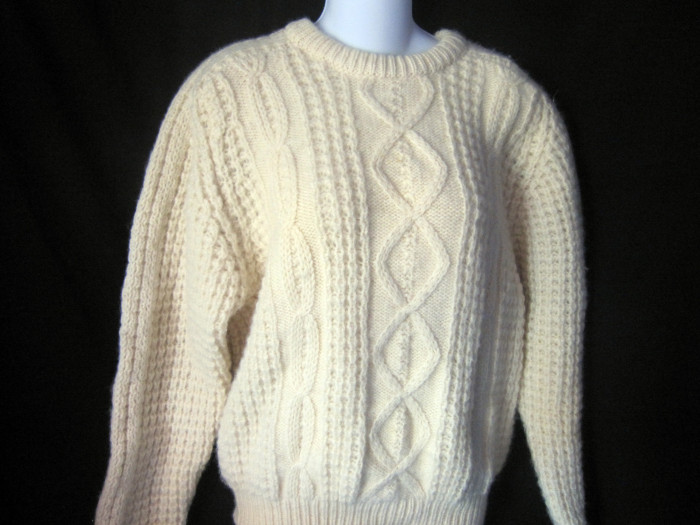Irish Man's Sweater: "Aran"
Collection: Everyday Connections
The Aran Sweater takes its name from the set of islands where it originated many generations ago, off the West coast of Ireland. The Islanders were fishermen and farmers whose lives and livelihoods were deeply intertwined. The Aran sweater has become the ultimate symbol of Irish Clan heritage.
Historically, each family had their own particular pattern, a unique combination of stitches, which was closely guarded within clans and passed down from mother to daughter, generation to generation. These individual clan patterns have been recorded and registered with the Aran Sweater Museum on the Aran Islands. The many combinations of stitches seen on the garment can impart vast amounts of information to those who know how to interpret them. The cable stitch is a depiction of the fisherman's ropes, and represents a wish for a fruitful day at sea. The diamond stitch reflects the small fields of the islands. These diamonds are sometimes filled with Irish moss stitch, depicting the seaweed that was used to fertilize the barren fields and produce a good harvest. Hence the diamond stitch is a wish for success and wealth. A finished sweater contains approximately 100,000 carefully constructed stitches, and can take the knitter up to sixty days to complete. It can contain any combination of stitches, depending on the particular clan pattern being followed. On the islands, patterns were zealously guarded, kept within the same clan throughout generations. They were often used to help identify bodies of fishermen washed up on the beach following an accident at sea.
The sweater is water repellent, not allowing the rain to penetrate the sweater thus keeping the wearer dry. An Aran sweater can absorb 30% of its weight in water before feeling wet. The sweater kept the wearer warm on the cold days and nights at sea or on the farm. Wool has an excellent insulating capacity due to the high volume of air in it, and this helps protect the wearer from excessive cold and heat.
Source:
